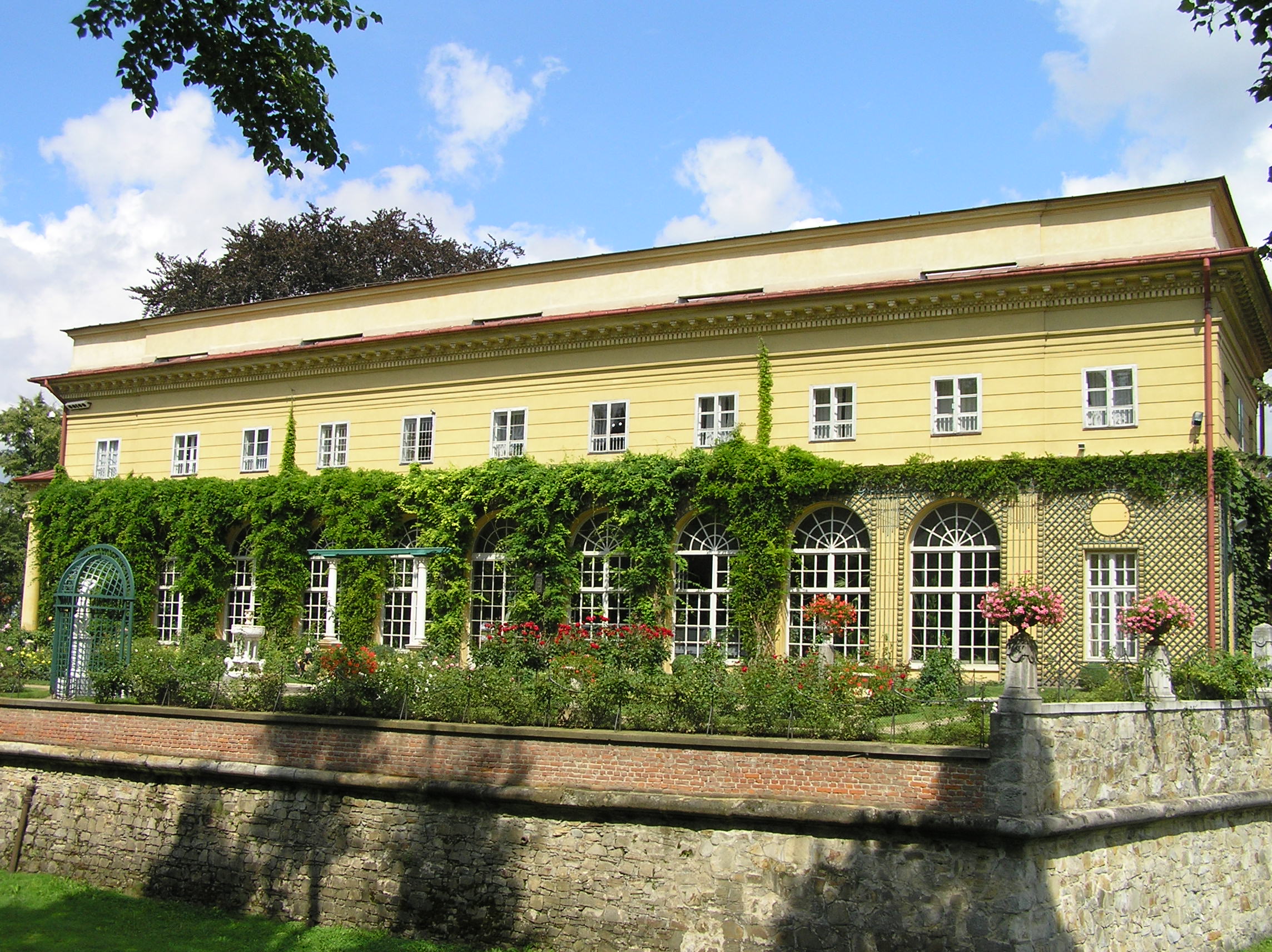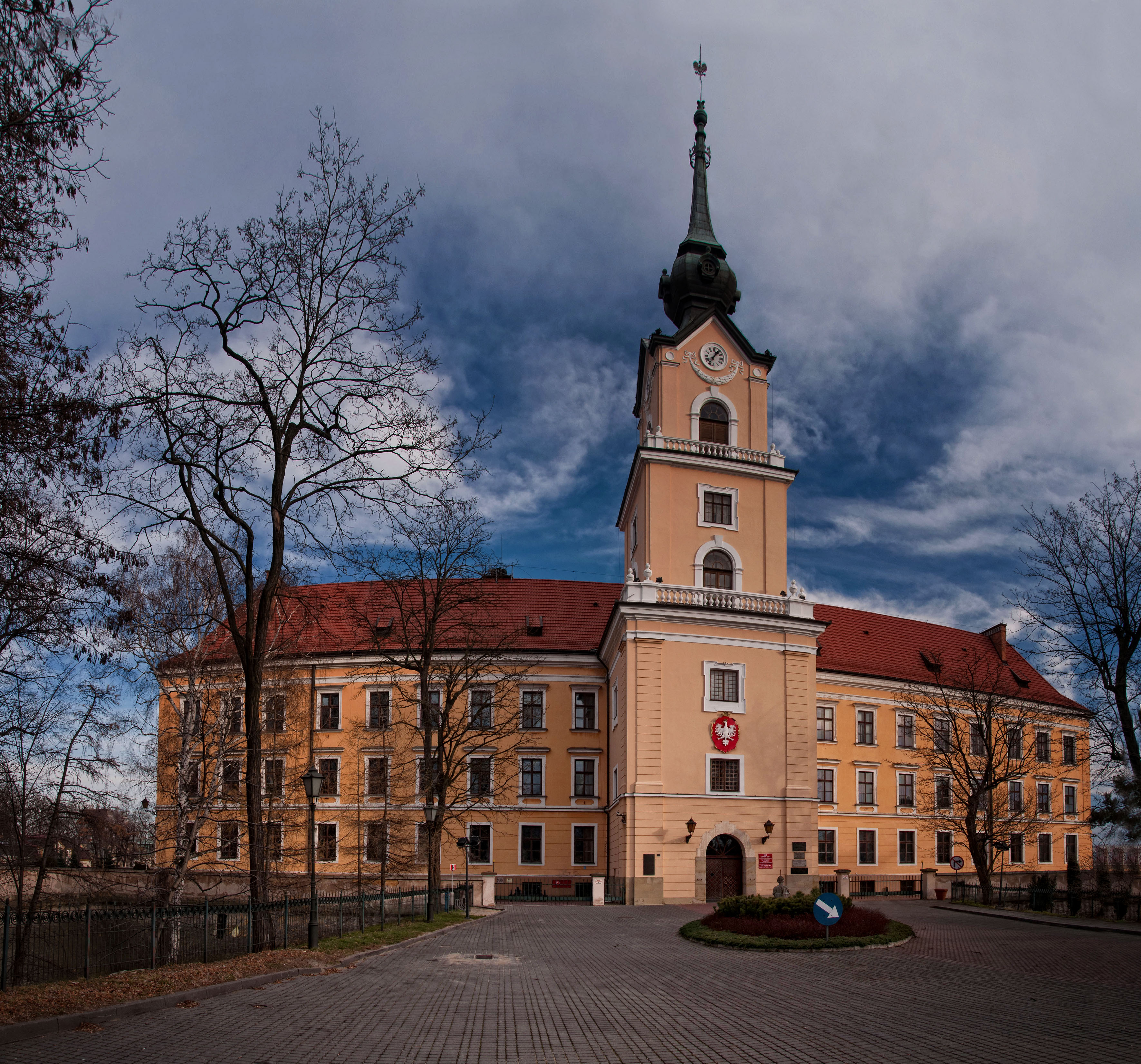|
ŇĀaŇĄcut
ŇĀaŇĄcut (, approximately "wine-suit"; yi, ◊ú◊ź÷∑◊†◊¶◊ē◊ė, Lantzut; uk, –õ–įŐĀ–Ĺ—Ć—Ü—É—ā, L√°n Ļtsut; german: Landshut) is a town in south-eastern Poland, with 18,004 inhabitants, as of 2 June 2009. Situated in the Subcarpathian Voivodeship (since 1999), it is the capital of ŇĀaŇĄcut County. History Archeological investigations carried out in the region of ŇĀaŇĄcut confirm the existence of human settlements from about 4000 years B.C. The first owner of the town was Otton (''z Pilczy'') Pilecki, who was given the ŇĀaŇĄcut estate by the Polish king, Casimir III the Great, in 1349, as a reward for his service. At the same time, the king also granted ŇĀaŇĄcut its city rights according to Magdeburg law. In 1381 ŇĀaŇĄcut was officially named a ‚Äėtown‚Äô for the first time, by Otton Pilecki, in the foundation charter of the town. ŇĀaŇĄcut remained under the ownership of the Pilecki family up to 1586. The city was then owned consecutively by aristocratic Polish families of S ... [...More Info...] [...Related Items...] OR: [Wikipedia] [Google] [Baidu] |
ŇĀaŇĄcut Castle
ŇĀaŇĄcut Castle is a complex of historical buildings located in ŇĀaŇĄcut, Poland. Historically the residence of the Pilecki, Lubomirski and Potocki families, the complex includes a number of buildings and is surrounded by a park. The castle is one of Poland's official national Historic Monuments ('' Pomnik historii''), as designated September 1, 2005, and tracked by the National Heritage Board of Poland. Owners In the second half of the 14th century, the land was the property of the Toporczyk family, who built a wooden castle on the hill. In the 16th century the castle belonged to Stadnicki family. Since the 17th century, the property was in the hands of the Lubomirski family, and then the Potocki family until 1944. History The castle was originally built in the second half of the 16th century, but was later modernised into a palace-residence by its owners. It was once home to two greatest Polish families ‚Äď first, until 1816, the Lubomirski family, and later ‚Äď until 194 ... [...More Info...] [...Related Items...] OR: [Wikipedia] [Google] [Baidu] |
ŇĀaŇĄcut County
__NOTOC__ ŇĀaŇĄcut County ( pl, powiat ŇāaŇĄcucki) is a unit of territorial administration and local government (powiat) in Subcarpathian Voivodeship, south-eastern Poland. It came into being on January 1, 1999, as a result of the Polish local government reforms passed in 1998. Its administrative seat and only town is ŇĀaŇĄcut, site of the famous ŇĀaŇĄcut Castle, lying east of the regional capital Rzesz√≥w. The county covers an area of . As of 2019 its total population was 80,898, out of which 22% in urban areas. Neighbouring counties ŇĀaŇĄcut County is bordered by LeŇľajsk County to the north, Przeworsk County to the east, and Rzesz√≥w County to the west. Administrative division The county is subdivided into seven gminas (one urban and six rural). These are listed in the following table, in descending order of population. Places of interest * Markowa Ulma-Family Museum of Poles Who Saved Jews in World War II, the first museum in Poland, dedicated to the rescue of Jewis ... [...More Info...] [...Related Items...] OR: [Wikipedia] [Google] [Baidu] |
StanisŇāaw Stadnicki
StanisŇāaw Stadnicki (c. 1551 in Nowy ŇĽmigr√≥d or Dubiecko ‚Äď 1610 in Tarnawiec), a Polish nobleman, Lord Starosta of ŇĽygwulsko (Sigulda), a known troublemaker, called 'the Devil of ŇĀaŇĄcut' (Polish: ''diabeŇā ŇāaŇĄcucki'') for his violent behaviour. Lord of the castle in ŇĀaŇĄcut. Enemy of Jan Zamoyski, Grand Chancellor of the Crown in 1606 he became one of the leaders of the rokosz of Zebrzydowski. From his ŇĀaŇĄcut castle he organised many assaults (zajazdy) at the estates of ŇĀukasz OpaliŇĄski and Anna Ostrogska. Married to Anna Stadnicka, father of Zygmunt Stadnicki, WŇāadysŇāaw Stadnicki, StanisŇāaw Stadnicki (junior) and Felicjana Stadnicka. After his death, his family carried his tradition of trouble-making, with his wife earning the nickname of ''the ŇĀaŇĄcut devil-woman'' and his sons, ''the ŇĀancut devil-children''. He was killed on 20 August 1610, when he was confronted with an overwhelming force loyal to ŇĀukasz OpaliŇĄski, and didn't manage to evade p ... [...More Info...] [...Related Items...] OR: [Wikipedia] [Google] [Baidu] |
Lubomirski Family
The House of Lubomirski is a Polish princely family. The Lubomirski family's coat of arms is the DruŇľyna coat of arms, which is similar to the Szreniawa coat of arms but without a cross. Origin and the coat of arms The Lubomirski family have been actors in the history of Poland since the 10th century. There are two theories regarding the family's origin. One, by Adam Boniecki, a Polish heraldist, assumes that there were two branches of the family. One settled at the Szreniawa River in Proszowice County while the other established itself in Szczyrzyc County. The time of this division of the family is not known, but most likely it was before the adoption of Christianity by Poland. The Szreniawici family used a similar coat of arms, which means that the two families had the same ancestry. At the time of Mieszko I, the members of the Lubomirski family demonstrated bravery in battle against pagans. For this they were awarded the rank of knight and a coat of arms, which ... [...More Info...] [...Related Items...] OR: [Wikipedia] [Google] [Baidu] |
Subcarpathian Voivodeship
Subcarpathian Voivodeship or Subcarpathia Province (in pl, Wojew√≥dztwo podkarpackie ) is a voivodeship, or province, in the southeastern corner of Poland. Its administrative capital and largest city is Rzesz√≥w. Along with the Marshall, it is governed by the Subcarpathian Regional Assembly. Historically, most of the province's territory was part of the Kingdom of Galicia‚ÄďVolhynia, the Kingdom of Galicia and Lodomeria and the Ruthenian Voivodeship. In the interwar period, it was part of the Lw√≥w Voivodeship. The voivodeship was created on 1 January 1999 out of the former Rzesz√≥w, PrzemyŇõl, Krosno and (partially) Tarn√≥w and Tarnobrzeg Voivodeships, pursuant to the Polish local-government reforms adopted in 1998. The name derives from the region's location near the Carpathian Mountains, and the voivodeship comprises areas of two historic regions of Eastern Europe ‚ÄĒ Lesser Poland (western and northwestern counties) and Red Ruthenia. During the interwar period ( ... [...More Info...] [...Related Items...] OR: [Wikipedia] [Google] [Baidu] |
List Of Polish Counties
__NOTOC__ The following is an alphabetical list of all 380 county-level entities in Poland. A county or powiat (pronounced ''povyat'') is the second level of Polish administrative division, between the Voivodeships of Poland, voivodeship (provinces) and the gmina (municipalities or communes; plural "gminy"). The list includes the 314 "land counties" (''powiaty ziemskie'') and the 66 "city counties" (''miasta na prawach powiatu'' or ''powiaty grodzkie''). For general information about these entities, see the article on powiats. The following information is given in the list: *English name (as used in Wikipedia) *Polish name (does not apply to most city counties, since these are not translated). Note that sometimes two different counties have the same name in Polish (for example, Brzeg County and Brzesko County both have the original name ''powiat brzeski''). *County seat (not given in the case of city counties, as the seat is simply the city itself). Note that sometimes the seat ... [...More Info...] [...Related Items...] OR: [Wikipedia] [Google] [Baidu] |
Vehicle Registration Plates Of Poland
Vehicle registration plates of Poland indicate the region of registration of the vehicle given the number plate. According to Polish law, the registration plate is tied to the vehicle, not the owner. There is no possibility for the owner to keep the licence number for use on a different car, even if it's a cherished registration. The licence plates are issued by the powiat (county) of the vehicle owner's registered address of residence, in the case of a natural person. If it is owned by a legal person, the place of registration is determined by his/her address. Vehicles leased under operating leases and many de facto finance leases will be registered at the address of the lessor. When a vehicle changes hands, the new owner must apply for new vehicle registration document bearing his or her name and registered address. The new owner may obtain a new licence plate although it is not necessary when the new owner's residence address is in the same district as the previous owner's. I ... [...More Info...] [...Related Items...] OR: [Wikipedia] [Google] [Baidu] |
Potocki Family
The House of Potocki (; plural: Potoccy, male: Potocki, feminine: Potocka) was a prominent Polish noble family in the Kingdom of Poland and magnates of the Polish‚ÄďLithuanian Commonwealth. The Potocki family is one of the wealthiest and most powerful aristocratic families in Poland. History The Potocki family originated from the small village of Potok Wielki; their family name derives from that place name. The family contributed to the cultural development and history of Poland's Eastern Borderlands (today Western Ukraine). The family is renowned for numerous Polish statesmen, military leaders, and cultural activists. The first known Potocki was ŇĽyrosŇāaw z Potoka (born about 1136). The children of his son Aleksander (~1167) castelan of Sandomierz, were progenitors of new noble families such as the Moskorzewskis, StanisŇāawskis, Tworowskis, Borowskis, and StosŇāowskis. Jakub Potocki (c. 1481-1551) was the progenitor of the magnate line of the Potocki family. Th ... [...More Info...] [...Related Items...] OR: [Wikipedia] [Google] [Baidu] |
Classical Music
Classical music generally refers to the art music of the Western world, considered to be distinct from Western folk music or popular music traditions. It is sometimes distinguished as Western classical music, as the term "classical music" also applies to non-Western art music. Classical music is often characterized by formality and complexity in its musical form and harmonic organization, particularly with the use of polyphony. Since at least the ninth century it has been primarily a written tradition, spawning a sophisticated notational system, as well as accompanying literature in analytical, critical, historiographical, musicological and philosophical practices. A foundational component of Western Culture, classical music is frequently seen from the perspective of individual or groups of composers, whose compositions, personalities and beliefs have fundamentally shaped its history. Rooted in the patronage of churches and royal courts in Western Europe, surv ... [...More Info...] [...Related Items...] OR: [Wikipedia] [Google] [Baidu] |
Jacek Komuda
Jacek Lech Komuda (born 23 June 1972) is a Polish writer and historian. He specialized in the period of the Polish‚ÄďLithuanian Commonwealth and History of Poland (1569‚Äď1795), and is the author of several novels and short stories of fantasy/historical novel genre. He is a co-author of the Dzikie Pola role-playing game, and script writer for Earth 2160 computer games. He is also an editor of computer game magazine GameStar (Polish edition), and used to contribute to Click! and Komputer Ňöwiat GRY magazines. Works Books * '' Dzikie Pola'' roleplaying game * '' OpowieŇõci z Dzikich P√≥l'' (short story anthology, Alfa 1999, ) * ''Wilcze gniazdo'' (novel, Fabryka SŇā√≥w 2002, ) * '' OpowieŇõci z Dzikich P√≥l'' (short story anthology, Fabryka SŇā√≥w 2004, ) * '' WarchoŇāy i pijanice'' (history book, Fabryka SŇā√≥w 2004, ) * '' Imińô Bestii'' (short story anthology, Fabryka SŇā√≥w 2005, ) * '' Bohun'' (novel, Fabryka SŇā√≥w 2006, ) * '' Czarna szabla'' (short story anthology, Fabryk ... [...More Info...] [...Related Items...] OR: [Wikipedia] [Google] [Baidu] |

.jpg)



